Beloved community is formed not by the eradication of difference but by its affirmation, by each of us claiming the identities and cultural legacies that shape who we are and how we live in the world.
– Bell Hooks
As I attended a grade six classroom’s Digital Film Festival a few weeks ago, I was surprised to hear a student excitedly declare that creating his own ‘I Belong’ digital story was the best thing to happen to him this school year. I’ve always thought of the ‘I Belong’ project as something cathartic for the kids to do amid difficult school years punctuated by the pandemic. In my more hopeful moments, I’ve considered its potential to act as a catalyst for the types of conversations that leave you feeling as though someone actually sees you – all of you – and still accepts you. And yet, I’m continuously surprised by the intensity of emotion I encounter from participating students, from this boy’s sense of enthusiasm and joy to the anger and sadness that wrap itself around our youth when they recount instances of rejection or discrimination.
As one of the ‘I Belong’ project coordinators, I have the privilege of bearing witness to hundreds of students’ artistic creations, live performances and acts of community service. I get to speak with dozens of teachers and artist-educators about their experiences leading conversations with students about who they are and what it means to fit in – or not. I am often privy to beautiful moments that make my heart swell, and many moments that make my heart wrench.
As the project continues to unfold, I thought it would be interesting – if not useful for teachers interested in fostering inclusion – to amplify students’ voices by sharing some of the themes that keep coming up in their work.
What Students are Saying
This video highlights images and excerpts from student projects, teacher and artist testimonials from Year 1 of the ‘I Belong’ project. A majority of the audio track was lifted from Laval Senior Academy’s ‘Take Action’ project, which involved the creation of ‘Last Wave’ radio station. The radio station, which is still running, was introduced to help cultivate a deeper sense of belonging at the school.
At the elementary level, the subjects of identity and belonging commonly center on students’ families (pets included), close friends, cultural identities, sports and food, local arenas, school, acts of inclusion and exclusion. Younger students largely remind us that small gestures are key to experiencing and fostering a sense of belonging: saying hello, laughing at one another’s jokes, asking each other’s opinions, including one another in games, sharing cultural staples like food and making space for differences. For an example of this, look at this recording.
A powerful moment was when I had a student say,
‘I never realized I belonged to so many different groups!’
– Samantha Grey, Teacher, New Carlisle (ESSB)
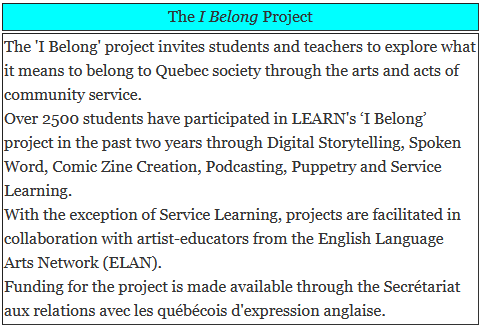 At the high school level, discussions of identity and belonging are more likely to include a focus on barriers, particularly experiences of discrimination or exclusion at school, in Quebec and/or Canadian society. These instances of discrimination are most commonly based on students’ gender, neurodiversity, sexuality, religion and race. Of course, it isn’t surprising to see that as students age, their worlds (and their challenges) begin to more closely resemble our own, but it is no less saddening. It would seem that whether you are an adult or teenager in this world, inequities and identity-based discrimation can be a core barrier to belonging. For example in this video, There is Nothing I See, a grade 11 student Rowan Draper (SWLSB) explores what it means to him to learn that he might have Indigenous ancestry.
At the high school level, discussions of identity and belonging are more likely to include a focus on barriers, particularly experiences of discrimination or exclusion at school, in Quebec and/or Canadian society. These instances of discrimination are most commonly based on students’ gender, neurodiversity, sexuality, religion and race. Of course, it isn’t surprising to see that as students age, their worlds (and their challenges) begin to more closely resemble our own, but it is no less saddening. It would seem that whether you are an adult or teenager in this world, inequities and identity-based discrimation can be a core barrier to belonging. For example in this video, There is Nothing I See, a grade 11 student Rowan Draper (SWLSB) explores what it means to him to learn that he might have Indigenous ancestry.
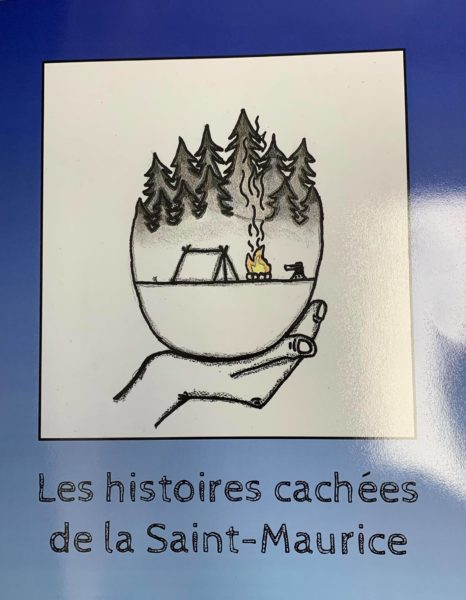
At La Tuque School in CQSB, students explored and built upon local legends through a Take Action project
The emerging focus on equity and diversity doesn’t end there. For this year’s ‘Take Action’ projects (i.e., service learning projects), we invited teachers and students to propose projects that had the potential to increase students’ sense of belonging to their schools. From the development of a hip-hop album critiquing gentrification in a Montreal neighborhood, to Indigenous education initiatives, and the development of multiple Genders and Sexuality Alliances (GSA) clubs, these teachers and students are also turning their attention to issues of equity and gaps in representation in a bid to help students find their voices and take their rightful places within their schools and communities.
Surprisingly, language has not emerged as a significant barrier to belonging for participating youth. This could reflect high levels of bilingualism in participating schools, or the growing number of students coming from bilingual homes, or the number of French speaking students with English eligibility, but it is also possible that linguistic barriers only take center stage when English speakers hit the job market.
The Relationship Between Belonging & EDI (Equity, Diversity & Inclusion)
What I am learning about belonging is that it is inseparable from issues of equity, diversity and inclusion. In fact, the works of researchers like Brené Brown (2015) suggest that the term ‘belonging’ is really just a misnomer for inclusion in most organizational contexts anyway; one that inappropriately places the emphasis on individual sentiment rather than organizational or institutional responsibility. Semantics aside, discussing and addressing issues of EDI(B) is challenging for teachers and students alike – but also well worth it.
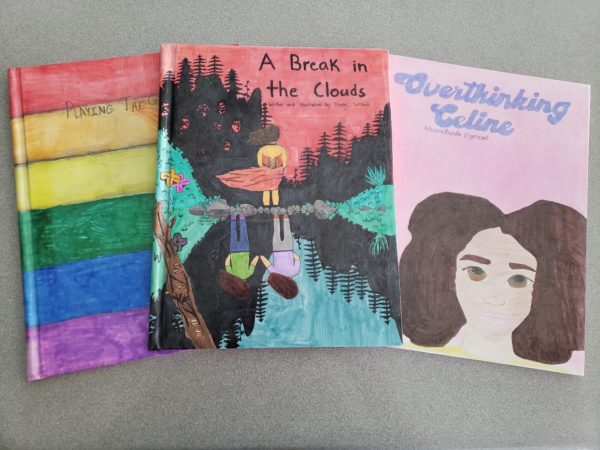
Books designed by students at Beurling Academy LBPSB, Take Action project
As we all know, it can be difficult to have nuanced conversations about social biases, issues of underrepresentation and injustice in public forums, but why is EDI so hard to address in school settings? In ‘I Belong’ project orientation and debrief sessions with teachers and artist-educators, as well as in LEARN’s equity series for the CLC network hosted earlier this school year, participants have helped to shed light on the difficulties of navigating conversations about EDI with students and among peers.
For teachers, common challenges include knowledge gaps (personal and across the school team), personal discomfort and fears of ‘getting it wrong,’ managing insensitive comments in the classroom, advocating for students while maintaining positive relationships with peers who hold challenging (if not problematic) perspectives, and balancing the opportunity for students to express and explore who they are with their right to privacy and safety (at home and at school).
Despite these challenges, teachers seem to agree that these types of conversations and initiatives help to connect students to themselves, their peers, and their teachers in meaningful ways that can lead to positive and tangible changes within the classroom and school environment.
Every time we choose courage, we make everyone around us a little better and the world a little braver. And our world could stand to be a little kinder and braver.
– Brené Brown (2010)
Promoting Belonging in Schools
While there is still much to learn, participating teachers and Community Development Agents across the province are already making a positive difference in their schools when it comes to belonging. Here’s a quick overview of three simple strategies that have stuck with me:
#1: Create & Promote Safe Spaces
There’s a reason why so many schools proposed to create GSA clubs this school year. Marginalized students need safe places to gather and people to talk to. Clubs also give visibility – social recognition and status – to students who may not otherwise see themselves as part of the school fabric. Similarly, many teachers have lauded the opportunity to partner with artist-educators that underrepresented students can identify with – representation matters.
Jennifer Gunn (2022) cites author and acclaimed journalist Annie Murphy Paul who observes that: “‘Research shows a sense of belonging is essential for learning. We humans are social beings, wired for membership in a group. Mental resources devoted to monitoring one’s environment for cues of rejection’ can’t be used to comprehend and remember academic content.”
#2: Embrace a Multicultural Calendar of Events
Be prepared to celebrate (visibly!) lesser known holidays like the Chinese New Year just as you might celebrate more commonly known ones. Visible celebrations send important signals of acceptance to practicing students while helping to raise awareness among the general student body – both key to fostering inclusion.
#3: Make Art Alongside Your Students
In the ‘I Belong’ project, teachers who made art and talked about their own sense of belonging alongside their students say it helped to strengthen connections and communication. In particular, it allowed students to get to know their teachers from a different, and perhaps more fundamentally human perspective, with warts, privileges, uncertainties and all.
As students and teachers wrap up Year 2 projects in April and May, I look forward to learning more from their experiences, but in the meantime, I’d encourage educators to (continue to) *invite students to talk about who they are. Consider talking to them about EDI – what it means and what it might suggest about our social responsibility toward one another. Celebrate their differences.
For some students, it just might be the best thing to happen to them this school year.
*Not sure where to start?
Check out the free resources included in the ‘I Belong’ teacher toolkits at ibelong.learnquebec.ca. Resources include conversation prompts for students at the elementary and high school levels, as well as the broad steps involved in leading a range of arts-based projects exploring identity and belonging.
References
Brown, B. (2010). The Gifts of Imperfection: Let Go of Who You Think You’re Supposed to Be and Embrace Who You Are. Hazeldon.org.
Gunn, J. (2022). Opening the Doors to Learning through Safe Spaces in K-12 Schools. Resilienteducator.com. https://resilienteducator.com/classroom-resources/creating-safe-spaces/

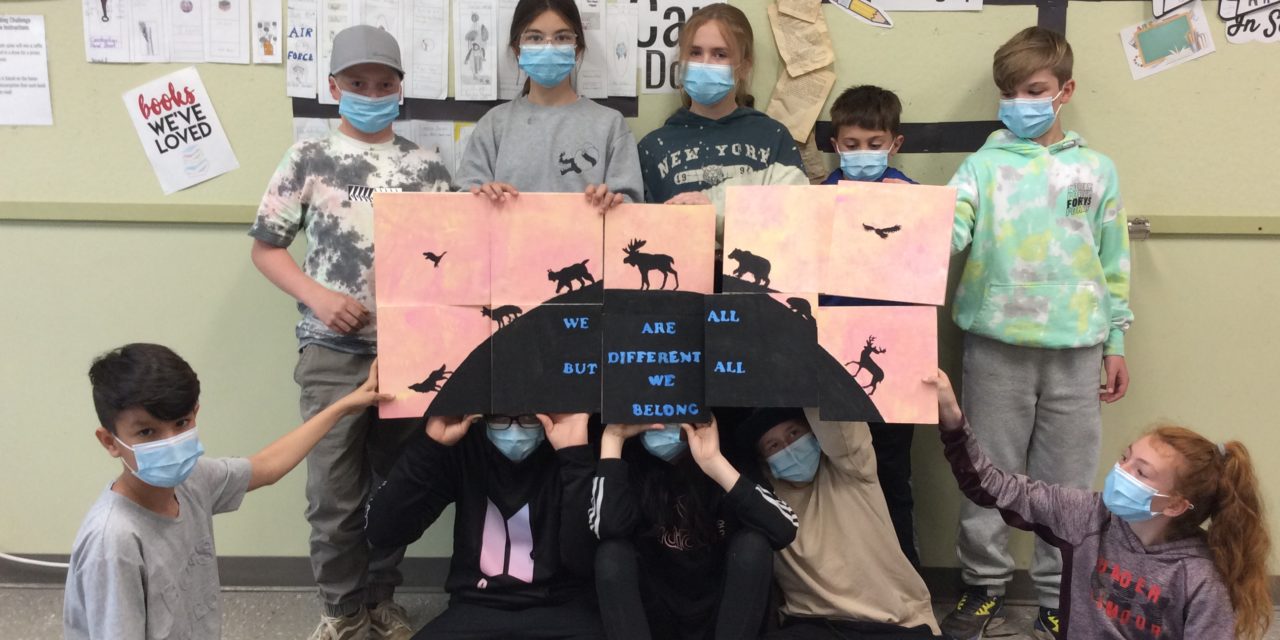
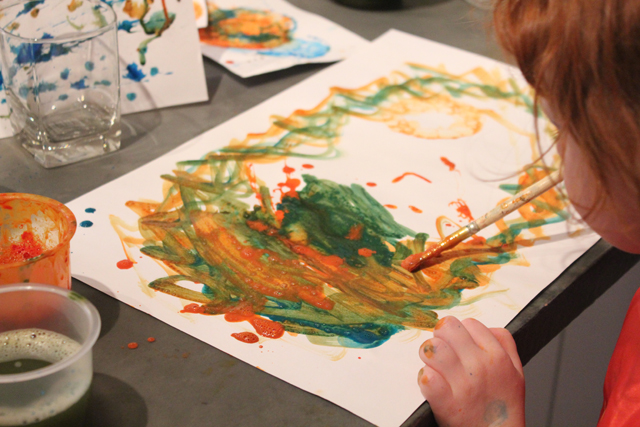



What an amazing project. This is work that breaks boundaries and is exemplary. Congratulations to all involved.
Thanks Michael, I’ll be sure to share your comment with the team.